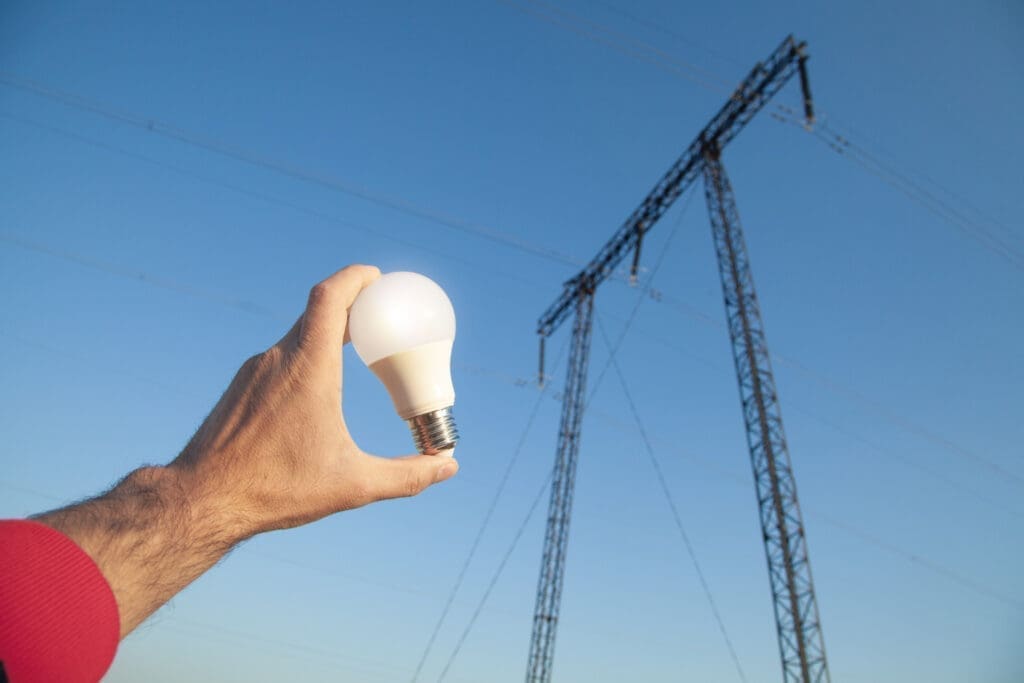Voltage drops and power losses in power lines
 Voltage drops in power lines
Voltage drops in power lines
Voltage drops and power losses in power lines are common and normal phenomena. They are associated with the flow of current through the different network components. What are they and what is their origin?
Basic definitions
An electrical voltage drop can be defined as the difference between two points on a network, such as the beginning and end of a power line. In practice, it is most often simply a decrease in the rms value of the voltage between the start and end measuring points (although a negative voltage drop is also possible, which nominally means an increase in voltage).
On the other hand, voltage loss in power lines is expressed as the geometric difference between the rms values of the voltage vectors at two points on the network, e.g. at the beginning and the end of the line. As far as overhead power lines are concerned, e.g. medium-voltage power lines, voltage losses result from the transverse current flow across the surface of insulators and the current flow between phases.
Power losses in power lines can be divided into 2 types:
- load losses, which are load-dependent and arise in the longitudinal elements of the transmission line
- idle losses, which are practically independent of the load and arise in the transverse admittances of the transmission line
Minimising active power losses involves aiming for a situation in which the power factor of energy consumers is as close to unity as possible and power transmission is carried out at a sufficiently high voltage.
Voltage drop in the legislation
The permissible values of the voltage drop in the power network are regulated by the relevant legislation and are contained in the Regulation of the Minister of Economy of 4 May 2007 on the detailed conditions for the operation of the power system. It follows from the Regulation that:
For consumers in connection groups I and II: in each week, 95% of the set of 10-minute average rms values of the supply voltage should be within the following deviation ranges:
- ±10% of rated voltage for networks with a rated voltage of 110 kV and 220 kV
- +5% / -10% of rated voltage for networks a with rated voltage 400 kV
For consumers in connection groups III to V: in each week, 95% of the set of 10-minute average rms values of the supply voltage should be within the deviation range of ±10% of the rated voltage.
In order to supply consumers with energy at the correct voltage level, efforts should be made to limit the voltage drop in electrical lines and installations to the absolute minimum possible. This is because voltage values strongly influence the parameters of the network and electrical equipment.

Sources of losses in transformers
One of the challenges facing the electrical power engineering is to minimise power losses in transformers. To do this, it is necessary to measure the losses. Thermal imaging studies with a camera can be used in this process, making it possible to visualise differences in the temperatures of the individual components of the transformer station.
The operation of transformers and the energy consumers they power is negatively affected by voltage distortion, which results in increased power losses in the windings, as well as increased additional losses from eddy currents in the windings and metal parts of oil-immersed transformers. Power losses in transformers are manifested by increased heat generation and an increase in its operating temperature, which can have a negative impact on the service life of the transformer or the condition of the insulation.
There are two types of power losses in transformers: losses in the windings – which depend on the transformer load, and losses in the core – which are independent of the load. Most often, core losses are the main contributor to transformer losses. A way to reduce these losses is through changes in the design of magnetic cores and transformer windings.
Stabilisation of networks powered by RES
The development of modern electrical power engineering is largely based on renewable energy sources. Power losses and voltage drops apply to RES power systems as well. One solution to stabilise RES-powered networks is electricity storage facility.
A potential problem for renewable energy when there are many prosumer installations is voltage value issues, particularly during periods of peak generation, which can cause voltage drops. Electricity storage facilities can be used to stabilise the voltage value and thus make more efficient use of the energy produced from renewable sources. These have both micro and macro applications. They contribute to balancing the power grid, increase its flexibility, mitigate the risk of supply interruptions and, in the event of an outage, can provide an additional emergency source of power. Energy storage facilities can therefore be one of the tools to reduce power losses in the power system.